Festivals in Karnataka in October 2025: Celebrations, Rituals, and Cultural Significance
Introduction
October is a festive month in Karnataka, brimming with celebrations that showcase the state’s rich cultural heritage. This article explores Karnataka’s major festivals in October 2025, providing insights into each festival’s history, unique rituals, and cultural significance, which reflect the vibrant traditions of the region.
Read More About Hindu Philosophy
1. Mysore Dasara (October 2-13, 2025)
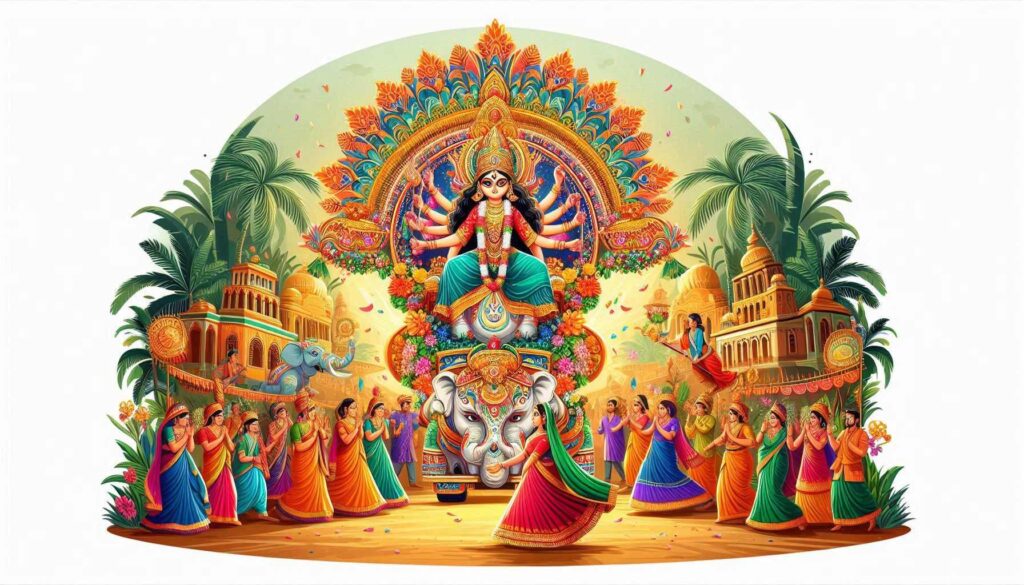
Overview:
Mysore Dasara, Karnataka’s most celebrated festival, marks the triumph of good over evil and is deeply intertwined with the state’s history and heritage. Celebrated with grandeur, especially in Mysore, this ten-day festival honors Goddess Chamundeshwari, the slayer of the demon Mahishasura.
Rituals and Traditions:
- Jamboo Savari (Elephant Procession): The festival culminates with a grand procession where the idol of Goddess Chamundeshwari is carried on a decorated elephant through the streets of Mysore. This tradition dates back centuries, drawing thousands of visitors.
- Mysore Palace Illumination: Every evening, the Mysore Palace is illuminated with thousands of lights, creating a mesmerizing sight. Various cultural events, including music, dance, and folk performances, take place in the palace grounds.
- Ayudha Puja and Vijayadashami: On the ninth day, tools, vehicles, and weapons are worshipped in a ceremony called Ayudha Puja, symbolizing respect for the instruments of livelihood. Vijayadashami, the festival’s concluding day, represents victory and prosperity.
Cultural Significance:
Mysore Dasara is not only a religious festival but also a showcase of Karnataka’s rich cultural diversity, uniting people from various backgrounds in a shared celebration of heritage.
2. Mahanavami (October 12, 2025)
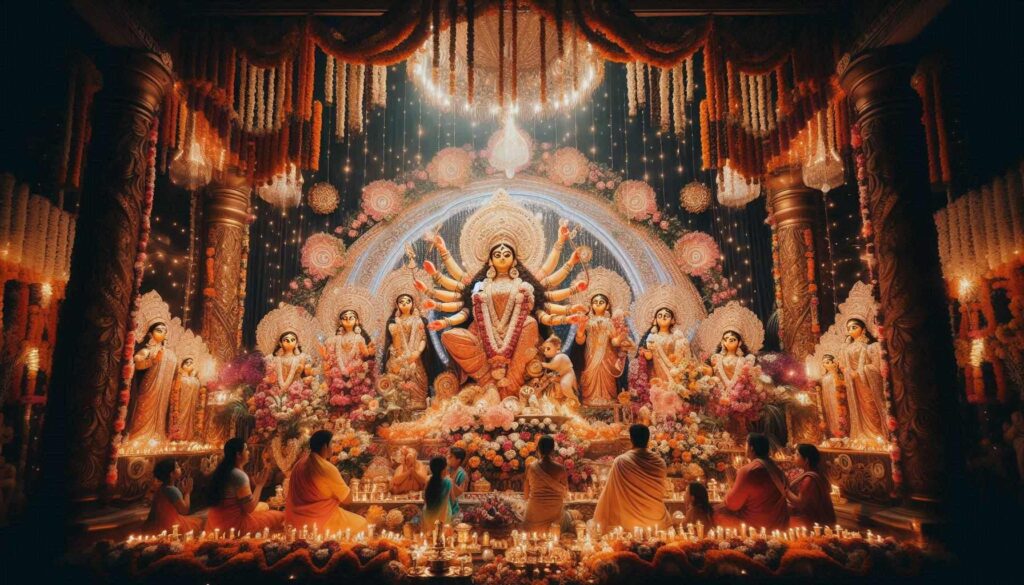
Overview:
Mahanavami, the ninth day of Navaratri, is widely celebrated in Karnataka. This day is especially auspicious for invoking blessings from the divine feminine, represented by Goddess Durga in her powerful forms.
Rituals and Traditions:
- Durga Puja: Families and temples perform elaborate rituals dedicated to Goddess Durga. Offerings include flowers, sweets, and traditional dishes, while devotees chant hymns and perform aarti.
- Animal Sacrifice in Some Regions: In certain rural areas, animal sacrifices are conducted to honor the goddess and seek her blessings, although vegetarian offerings are more common in urban regions.
- Public Processions: Devotees in many regions take part in processions carrying idols of the goddess, accompanied by music and dance, culminating in the immersion of the idol in rivers or lakes.
Cultural Significance:
Mahanavami is a day of immense spiritual energy, symbolizing the strength and compassion of the divine feminine. It is a reminder of Karnataka’s devotion to Durga and the embodiment of divine power.
3. Vijayadashami (October 13, 2025)
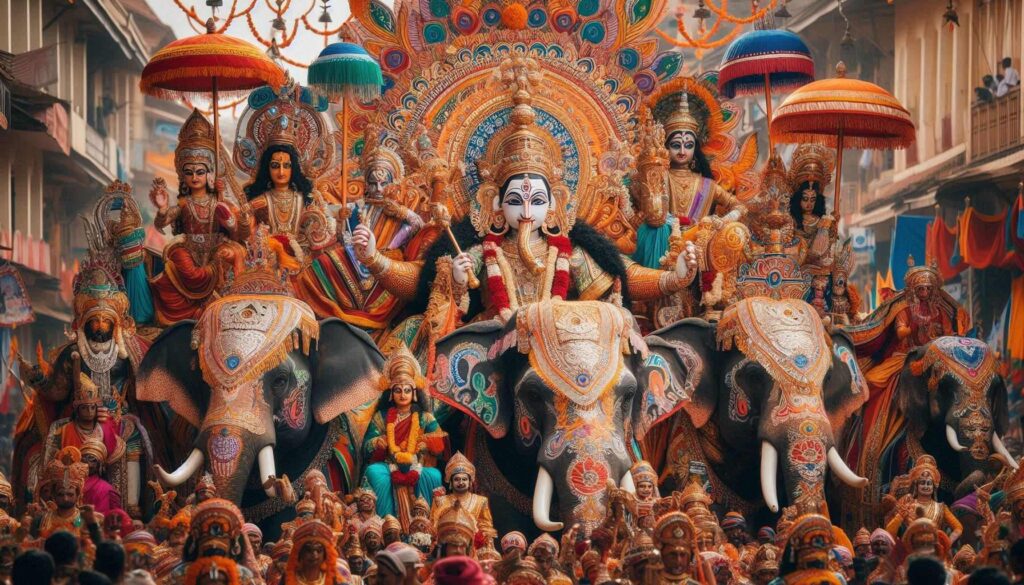
Overview:
Vijayadashami, also known as Dussehra, marks the end of Navaratri and celebrates the victory of good over evil. In Karnataka, it is a day of auspicious beginnings and festive joy, marked by Mysore Dasara’s conclusion.
Rituals and Traditions:
- Seema Avalanghan (Crossing the Border): In rural Karnataka, this ritual involves symbolically crossing the village border, representing victory and protection.
- Shami Puja: Worship of the Shami tree, which is believed to bring prosperity and ward off evil. People exchange Shami leaves as a token of goodwill.
- Cultural Performances: The festival concludes with vibrant performances that highlight folk traditions, including dance forms like Yakshagana, a traditional theater from coastal Karnataka.
Cultural Significance:
Vijayadashami is considered one of the most auspicious days to start new ventures. It celebrates courage, righteousness, and the triumph of virtue, inspiring people across Karnataka.
4. Sharad Purnima (October 18, 2025)
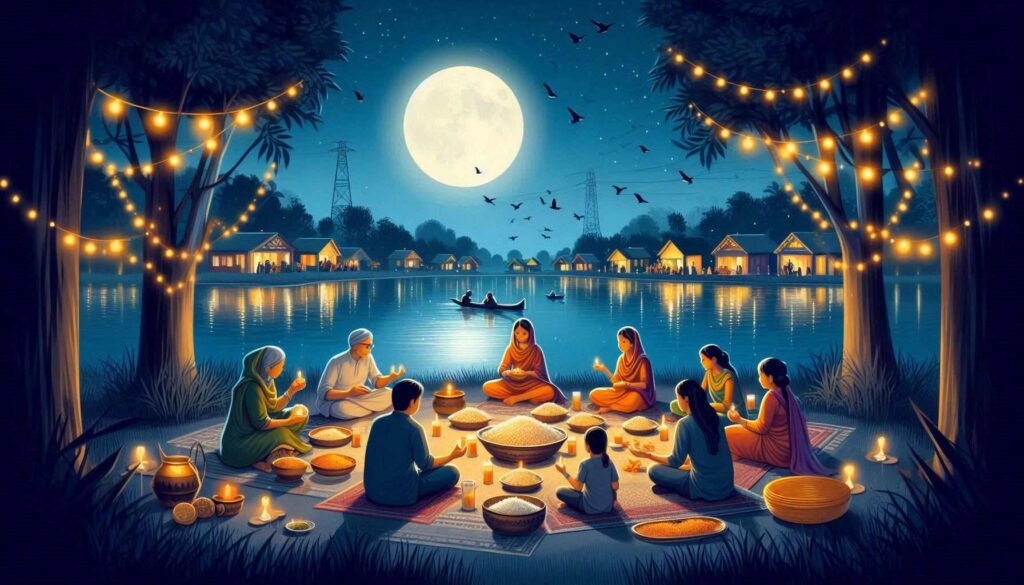
Overview:
Sharad Purnima, also known as Kojagari Purnima, is a harvest festival celebrated across Karnataka. It is dedicated to Goddess Lakshmi, the goddess of prosperity and fortune.
Rituals and Traditions:
- Lakshmi Puja: Devotees worship Goddess Lakshmi, seeking wealth and prosperity for their families. Special offerings include rice flakes and milk, which are considered Lakshmi’s favorites.
- Moonlight Festivities: As per tradition, people gather outdoors under the full moon, sharing stories, singing songs, and enjoying specially prepared sweets.
- Tulsi and Amla Worship: Some families worship the holy basil (Tulsi) and amla plants, which are believed to bring health and vitality.
Cultural Significance:
Sharad Purnima is a time for gratitude, celebrating the harvest and praying for prosperity. It emphasizes the harmony between nature and spirituality in Karnataka’s rural and urban communities alike.
5. Karva Chauth (October 21, 2025)
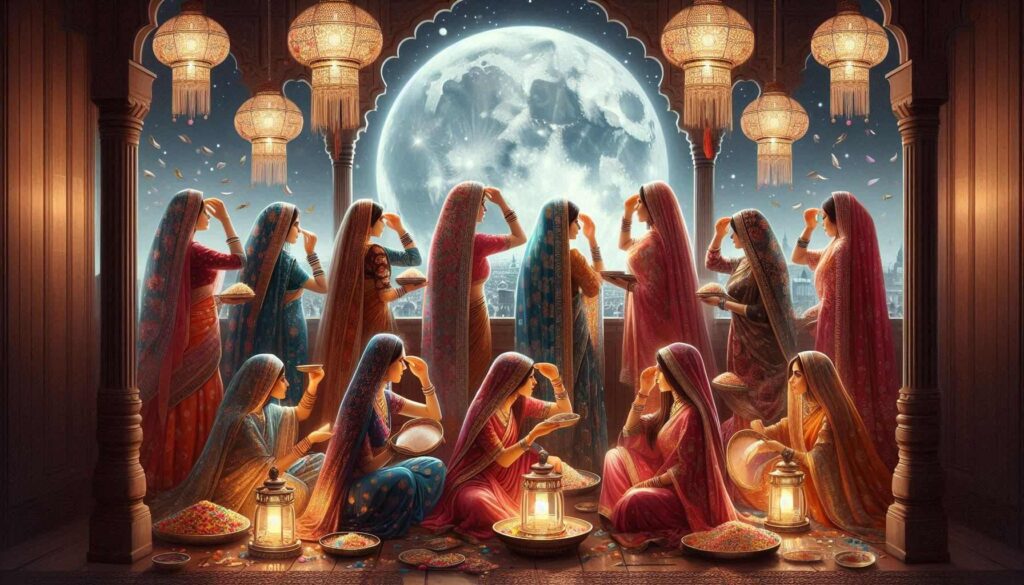
Overview:
Though primarily a North Indian festival, Karva Chauth has gained popularity in Karnataka, especially among communities with North Indian roots. This day is dedicated to marital harmony, with wives fasting for the well-being of their husbands.
Rituals and Traditions:
- Fasting and Puja: Married women observe a strict fast from sunrise to moonrise. They gather in groups to perform puja, listen to stories of Karva Chauth, and pray for the longevity and prosperity of their husbands.
- Sight Moon Ritual: The fast is broken only after sighting the moon. Women view the moon through a sieve and then see their husbands’ faces, symbolizing the importance of marital devotion.
- Community Celebrations: Urban areas host gatherings where women from different backgrounds share in the rituals, enhancing the sense of community.
Cultural Significance:
Karva Chauth symbolizes love, commitment, and the strength of marital bonds. Its increasing popularity in Karnataka reflects the blending of diverse cultural practices within the state.
Conclusion
October in Karnataka is a month rich in traditions, devotion, and unity, where ancient rituals and new practices blend harmoniously. From the grandeur of Mysore Dasara to the quiet devotion of Karva Chauth, these festivals illustrate Karnataka’s spiritual depth and cultural diversity. This month-long celebration highlights the deep-rooted traditions and reinforces Karnataka’s cultural identity.


